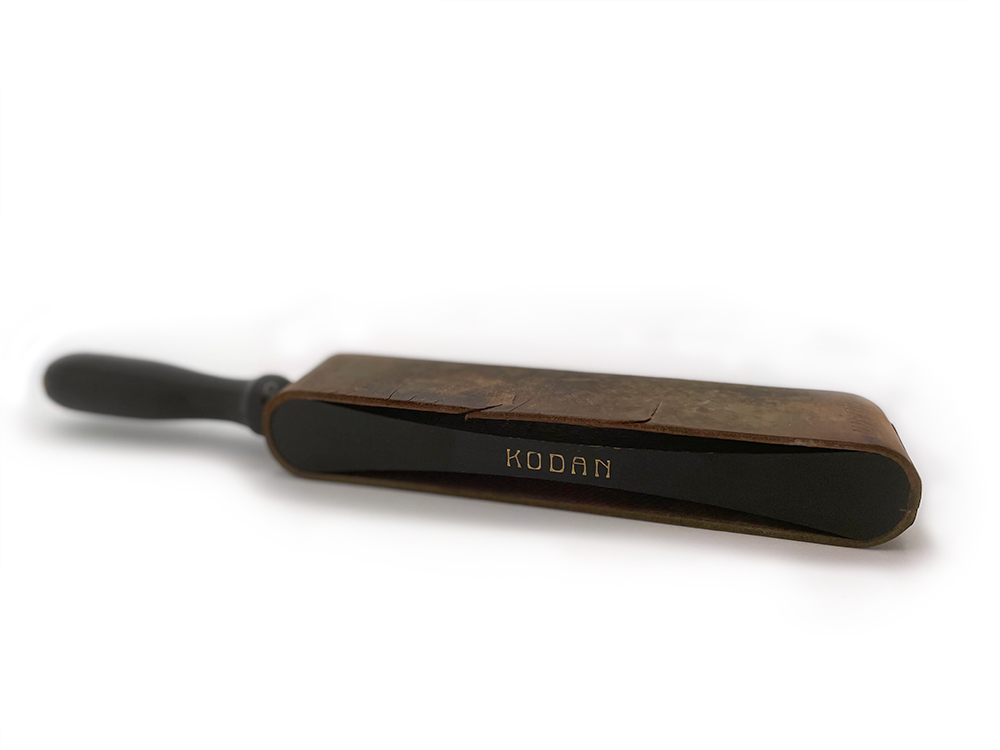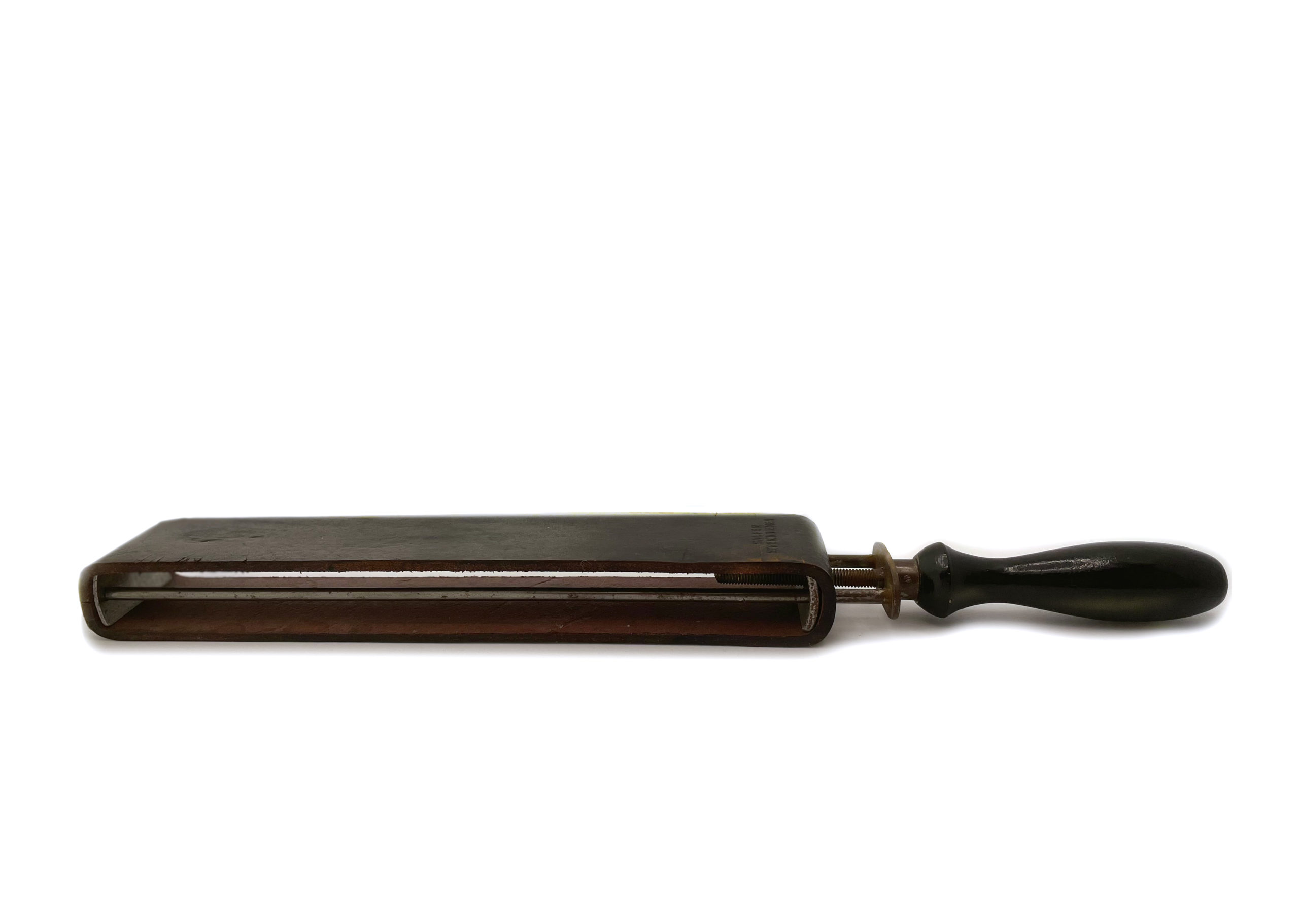Among the relics kept within the walls of our shop there are different types of strop, a fundamental tool for the maintenance of straight razors.
Let’s clarify immediately: the strop is not used to sharpen the razor blade (special stones serve this purpose ), but to refine or revive the edge.
In fact, the razor blade gets damaged over time: sharpening can produce small grooves due to rubbing, shaving itself can lead to the formation of tiny teeth due to the collision with the hair and moisture favosr micro-oxidation. All this reduces the blade’s ability to cut, hinders its smoothness and makes it more irritating to the skin.
The use of the strop aims at eliminating these imperfections from the blade.
The classic strop consists of a strip of leather (the name itself derives from the Latin corium which means leather) and can take on different shapes:
-
hanging strop – it’s the most common type and has a hook at one end to be able to fix it to the wall or to a stable support and at the other a handle that allows those who use it to stretch it;
-

Hanging strop
-
paddle strop – the leather strip is attached to a rigid support of slightly shock-absorbing material (like wood);
-

Paddle strop
-
loom strop – the leather strip can be tightened by means of a metal frame with a wooden handle and a screw system whereby the tension of the leather is adjusted by screwing or unscrewing the handle.

Loom strop
The strop should be used after sharpening the razor and before shaving:
- the razor is placed on the leather, flat, so that the edge and the back of the blade are both in contact with the stretched leather strip;
- move the razor along the strip away from yourself with the back looking forward and the thread looking towards you. Often the strop is narrower than the blade and it’s therefore necessary to advance the razor by performing a diagonal movement, in order to cover the entire length of the blade;
- once reached the bottom of the strop, without lifting it, rotate the razor on the back (and not on the edge!), placing it in the right position to start an identical “return” path towards you;
- the movement must be done quickly enough (40-60 “turns” – back and forth – per minute) and with as little pressure as possible.
It’s necessary to pay the utmost attention as an incorrect use of the strop can damage the edge, which is very thin and bends easily, then making shaving uncomfortable.
Another important aspect is the maintenance of the strop: leather is in fact a natural material that tends to deteriorate over time.
- The first rule is to store the strop in a dry place (therefore possibly not in the bathroom, where humidity is often high);
- any cuts caused by the razor can be removed or regularized using a pumice stone or fine sandpaper, taking care to even out the entire surface of the strip;
- if the strop has been stored rolled up for a long time and creases have been created, these can be eliminated by spreading the strip on a flat surface and rolling a bottle of hot water over it;
- after a few years of use, it may be necessary to reinvigorate the leather with a special cream, but to avoid damage it’s good to check this aspect with the manufacturer.

